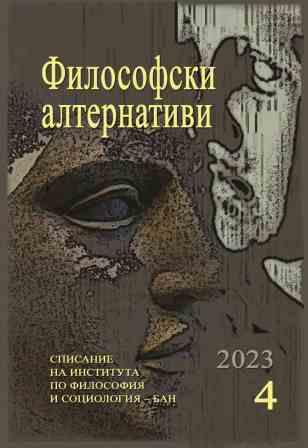A (Post)philosophical Argument on Anti-Art and Digital Transgressions of self-Fashioning. From Dada to Data, or How to Curate Selves on Instagram?
A (Post)philosophical Argument on Anti-Art and Digital Transgressions of self-Fashioning. From Dada to Data, or How to Curate Selves on Instagram?
Author(s): Oana ŞerbanSubject(s): Philosophy, Economy, Fine Arts / Performing Arts, Photography, Visual Arts, Aesthetics, Social Philosophy, ICT Information and Communications Technologies, Sociology of Art
Published by: Институт по философия и социология при БАН
Keywords: digital self; anti-art; curating; self-fashioning; Dada; data; transgression; photomontage
Summary/Abstract: This article tackles the possibility to understand the process of curating the digital self by treating virtual identities as a form of anti-art. The museification of the world engaged by social networks such as Instagram, a platform canonically devoted to visual content, seems to restore the Dada tradition of the photomontage, as well as the turn to the routine of our quotidian existence, aestheticized through live transmissions and daily vlogs. Insta-gramming became a digital practice that progressively installed what Richter used to call “the alienation of photography”, as there is no aesthetic claim for the visual content, but neither a profound ignorance of artistic criteria. Therefore, anonymous masses homogenized as co-performers of life-casting online consume results of a digital curating based on the Dada photomontage, the Futurist appetite for technology and the Surrealist automatic creation or psychic automatism. My argument is that as digital curation progressively shared with vanguards such principles, virtual identities became anti-art objects. Moreover, curating the self is no longer an artistic performance, but rather a social skill. In the last part of my study, I will bring to the spotlight two competitive narrations on digital curation, productive, respectively consumptive curation. In my opinion, these two paradigms raised by Davis are relevant for developing the commodification of the self, as well as new literary practices based on Bourriaud’s relational aesthetics. Consequently, I argue in favour of assuming the curation of the self by digital means as a daily practice entangling creativity and leisure, understood as creleisure, a concept coined by the artist Hélio Oiticica back in 1969. As aesthetics tends to track down such behaviours for their transgressive potential, measuring the historical shift of autocreation from Dada to Data perspectives, philosophy still has to work on the consequences of such phenomena on self-care, self-knowledge, and authenticity.
Journal: Философски алтернативи
- Issue Year: XXXII/2023
- Issue No: 4
- Page Range: 134-145
- Page Count: 12
- Language: English
- Content File-PDF

